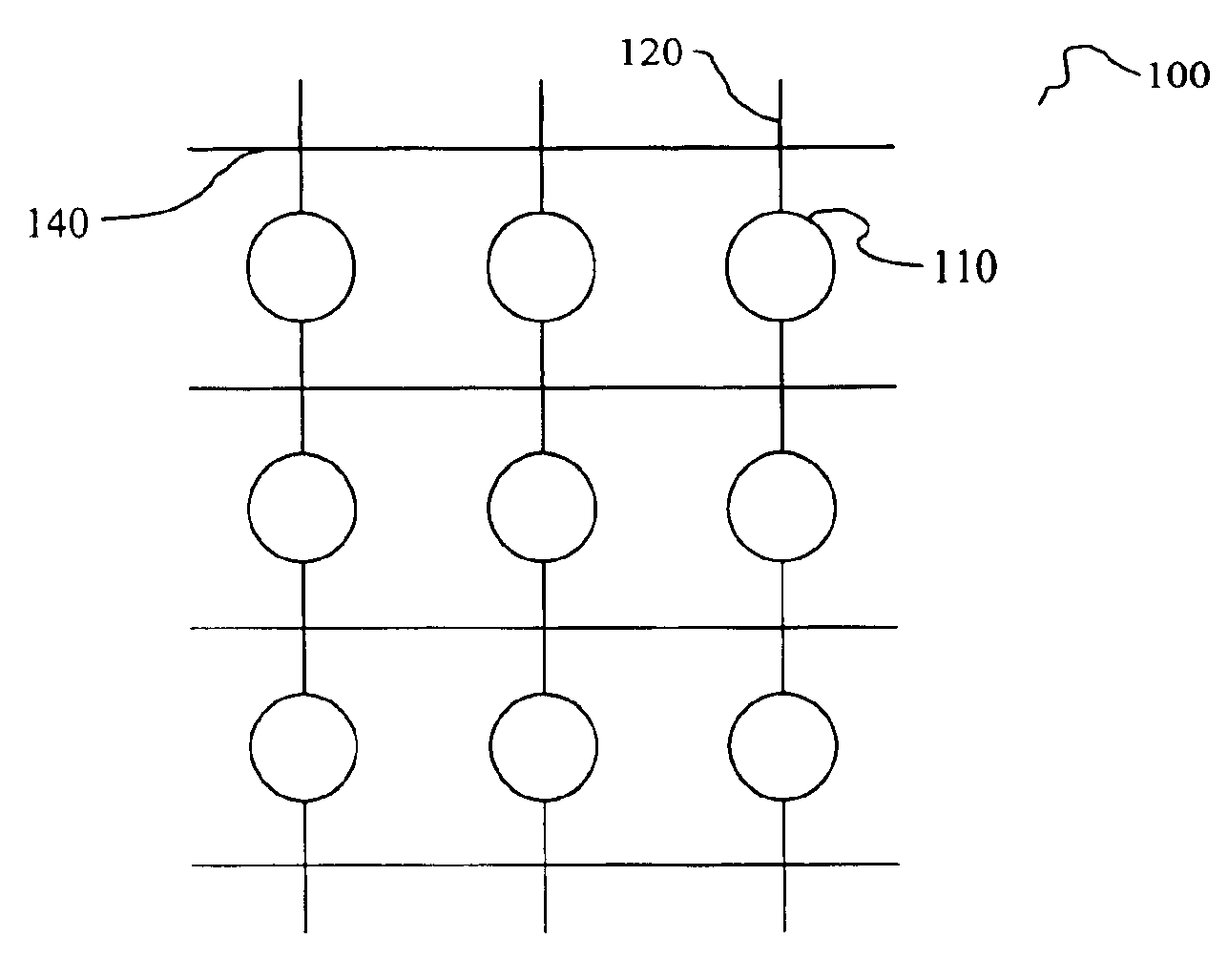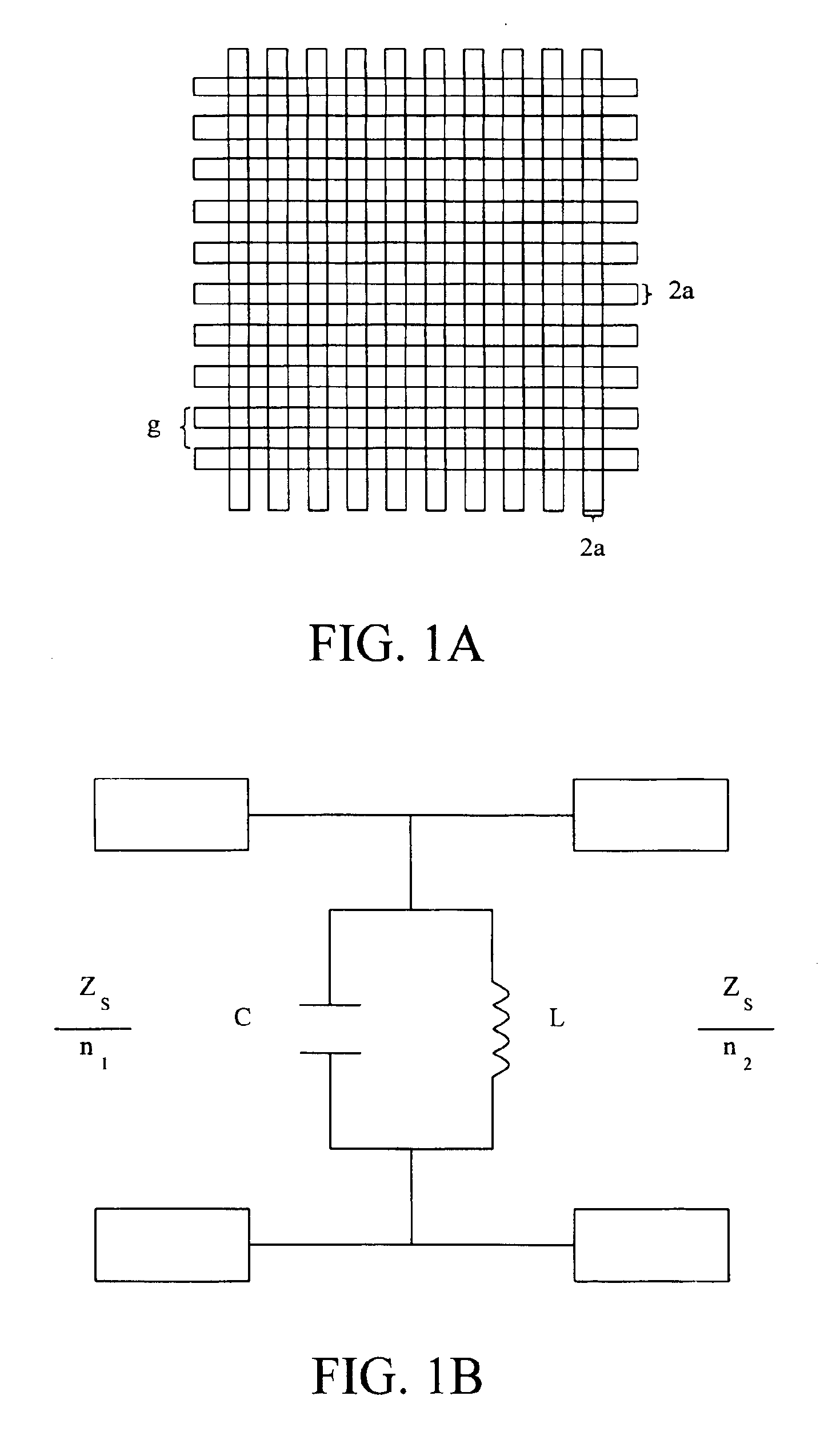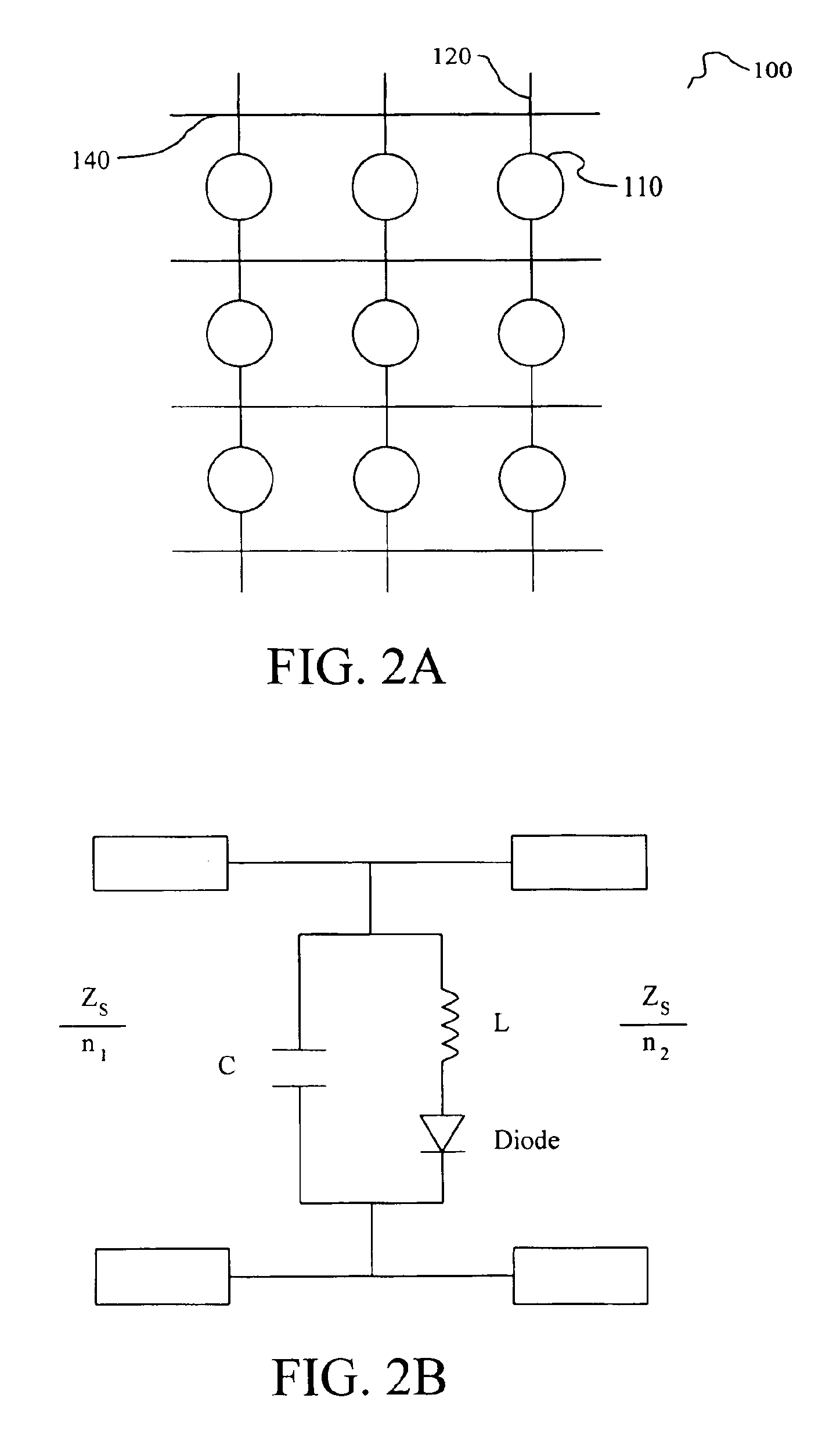Phase angle controlled stationary elements for long wavelength electromagnetic radiation
a technology of electromagnetic radiation and phase angle control, which is applied in the direction of mechanical recording, relays, instruments, etc., can solve the problems of cost, power and functionality, expensive phase shifters, and discrete electronic components (e.g. capacitors and inductors) losing their functionality,
- Summary
- Abstract
- Description
- Claims
- Application Information
AI Technical Summary
Benefits of technology
Problems solved by technology
Method used
Image
Examples
example 1
[0111]In this example, a stationary element without beam steering is described. The element is schematically depicted in FIG. 5A. The element includes a square grid 200 with grid period g that includes horizontal conductive strips 240 and vertical conductive strips 220 that include conductive segments 230, active regions 210 that include a volume of chalcogenide material, and junctions 250 between chalcogenide regions 210 and conductive segments 230. The active chalcogenide regions 210 are connected in series with the conductive segments 230 to form vertical strips 220. The active chalcogenide regions 210 may also be said to interconnect conductive segments 230. In this embodiment, each active region 210 interconnects two conductive segments 230. Although the active regions 210 are schematically depicted as circles, the shape of the active regions, or volume of chalcogenide material therein, is not limited to a circular shape. Chalcogenide regions having any shape are within the sco...
example 2
[0119]In this example, representative elements with beam steering capability are described. Specifically, elements with square grids similar to that described in EXAMPLE 1 are presented that provide beam steering of an incident electromagnetic beam. As discussed hereinabove and in co-pending U.S. patent application Ser. No. 10 / 226,828, beam steering may be achieved with an element that incorporates a continuous or discrete phase taper. In some embodiments of the instant example, a phase taper is achieved through the formation of a crystallinity gradient in the volumes of chalcogenide material distributed in one or more directions across the active regions of an element. In other embodiments, a phase taper is achieved through the formation of a crystallinity gradient over a series of domains, each of which comprises a plurality of sub-wavelength active chalcogenide regions. Non-uniformity of the structural state of the active chalcogenide regions in one or more directions across a gr...
example 3
[0126]In this example, additional elements with beam steering capability are described. More specifically, elements capable of focusing or defocusing incident electromagnetic radiation in reflection or transmission mode are described. Focusing and defocusing effects may be achieved by establishing a crystallinity gradient, over individual active chalcogenide regions or domains comprising a plurality of sub-wavelength chalcogenide regions, in which the variation of fractional crystallinity is non-uniform in one or more directions across the chalcogenide regions or domains of an element. A crystallinity gradient in a particular direction, for example, having portions over which the fractional crystallinity increases and other portions over which the fractional crystallinity decreases may provide focusing or defocusing.
[0127]FIG. 9 shows an embodiment of an element that can be used to symmetrically focus or defocus an incident electromagnetic beam in one direction. The element includes...
PUM
 Login to View More
Login to View More Abstract
Description
Claims
Application Information
 Login to View More
Login to View More - R&D
- Intellectual Property
- Life Sciences
- Materials
- Tech Scout
- Unparalleled Data Quality
- Higher Quality Content
- 60% Fewer Hallucinations
Browse by: Latest US Patents, China's latest patents, Technical Efficacy Thesaurus, Application Domain, Technology Topic, Popular Technical Reports.
© 2025 PatSnap. All rights reserved.Legal|Privacy policy|Modern Slavery Act Transparency Statement|Sitemap|About US| Contact US: help@patsnap.com



